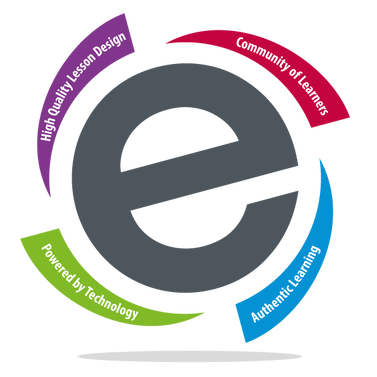Journey Summary
This session, the first of the Design Through Inquiry (DTI) four-part series, sets the stage for using DTI in your classroom. You will see an example of a DTI project completed by students and then engage in a design experience that immerses you in the principles of the Design Through Inquiry model. Through these experiences, you will deepen your understanding of how the DTI approach aligns with the eMINTS Instructional Model (eIM).
Curriculum-framing Questions
Essential Question
- What inspires innovation?
Unit Questions
- How can problem-solving inspire creativity and innovation?
- How might Design Through Inquiry promote higher-level thinking?
Content Questions
- How is innovation defined?
- What is a design challenge?
- What are the characteristics of a Design Through Inquiry experience?
- What standards connect to Design Through Inquiry?

Introduction
To inspire innovation in the classroom, students need to engage in problem-solving that requires them to use empathy, imagination, intuition, logic, and reasoning to explore potential solutions to authentic problems. Engineering Design and Design Thinking have emerged as powerful ways to solve problems using innovation and creativity. It is essential to gain a deeper understanding of ways to design engaging inquiry-based lessons that require problem-solving to fully embrace the Desgin Through Inquiry (DTI) approach.
Theory Behind Practice
All eMINTS materials are grounded in research-based best practices in K-12 education.
Digging Deeper
Agenda
- Opener: Introducing Design Through Inquiry (DTI)
- Exploring DTI and the eIM
- DTI Experience
- DTI Lesson Plan
- Your Classroom Challenge
- Multi- OR Interdisciplinary Considerations
- Closer: $2 Summary

Classroom Visit w/Students
Ask your facilitator to assist as you implement a short design challenge with students. This may be an opening activity, culminating activity, or an activity intended to engage students in questioning to guide inquiry. Your facilitator might also model or assist you with an activity that promotes student questioning or with posing meditative questions to assist students in achieving higher levels of thinking.
Classroom Visit w/out Students
Have a reflective discussion with your facilitator to learn from your Design Thinking experience and how you might use it with students. Collaborate to find ways the Design Through Inquiry process fits with what you are already doing. Collaborate to choose a topic and standards for writing a design lesson.

 Images Courtesy of
Images Courtesy of